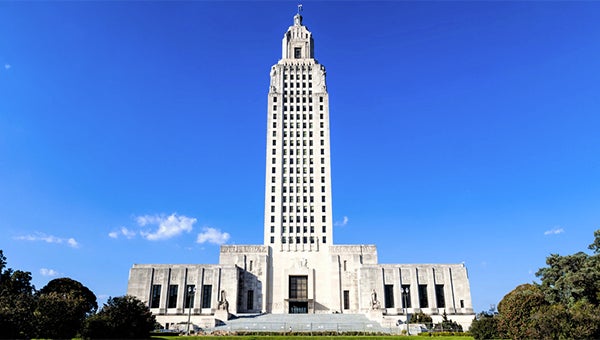State trust recognizes historic landmark
Published 4:19 am Wednesday, August 29, 2018

- Wendy Williams, right, joins Louisiana Trust for Historic Preservation executive director Brian Davis at Monday’s announcement.
A Bogalusa landmark was recently added to a list of the state’s most historic places.
On Monday, the Louisiana Trust for Historic Preservation (LTHP) announced 15 additions to the “Louisiana’s Most Endangered Places” list during a special event in the lobby of the Old State Capitol in Baton Rouge.
Among the sites added to the list was the Bogalusa Coca-Cola Bottling Co. plant, located on Shenandoah Street and first opened in 1930.
Wendy Williams, executive director for Project Save Bogalusa, attended the announcement in Baton Rouge. Williams nominated the Coca-Cola plant for the list several months ago.
“I was overjoyed that the nomination I made to have the building added to the list was successful,” Williams said.
Since 1999, the LTHP has highlighted endangered historic sites and advocated for their preservation and protection. The list is generated from nominations made by the public, and aims to attract creative approaches and resources to see the sites saved and rehabilitated.
“Historic building and sites are the fingerprints of our communities and it takes creative measures to preserve and protect them for future generations,” said Brian Davis, executive director of the LTHP. “Strategic partnerships, tax credits and programs like revolving funds can save buildings many people may consider too far gone.”
Villa de la Vergne in Covington was also one of the 15 sites selected for this year’s list.
The official entry for the Coca-Cola plant lists the following:
“Two-story brick bottling plant following guidelines of the Coca-Cola Bottlers for ‘Bottling Plant No. 3.’ Decorative cast-stone panels feature contoured Coca-Cola Bottle and honeysuckle leaf. Operated by the Mills Family for 75 years until the business was sold to Baton Rouge Coca-Cola Bottling Company. Building later housed commercial offices. Vacant since 2001 and impacted by water infiltration.”
LTHP officials noted that historic preservation is a catalytic tool for revitalization and economic development, as shown by the 2017 study by Place Economics titled, “The Historic Tax Credit: Building the Future in Louisiana.” The report found that between 2007 and 2016, nearly $2.7 billion was invested in Louisiana’s historic buildings as a direct result of state and federal rehabilitation tax credits.
These projects created an average of 1,725 direct jobs and an additional 1,429 indirect and induced jobs, such as tourism.
Louisiana is fifth in the nation in the value of historic tax credits awarded each year, and first in the nation in the number of annual historic tax credit projects.
For more information about the program, including a complete list of the 15 sites chosen in 2018 as well as a nomination form, visit online at www.lthp.org.




